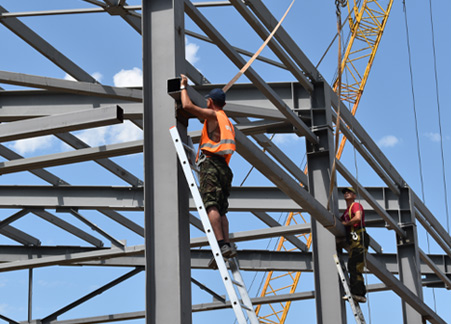
-
 Afrikaans
Afrikaans -
 Albanian
Albanian -
 Amharic
Amharic -
 Arabic
Arabic -
 Armenian
Armenian -
 Azerbaijani
Azerbaijani -
 Basque
Basque -
 Belarusian
Belarusian -
 Bengali
Bengali -
 Bosnian
Bosnian -
 Bulgarian
Bulgarian -
 Catalan
Catalan -
 Cebuano
Cebuano -
 Corsican
Corsican -
 Croatian
Croatian -
 Czech
Czech -
 Danish
Danish -
 Dutch
Dutch -
 English
English -
 Esperanto
Esperanto -
 Estonian
Estonian -
 Finnish
Finnish -
 French
French -
 Frisian
Frisian -
 Galician
Galician -
 Georgian
Georgian -
 German
German -
 Greek
Greek -
 Gujarati
Gujarati -
 Haitian Creole
Haitian Creole -
 hausa
hausa -
 hawaiian
hawaiian -
 Hebrew
Hebrew -
 Hindi
Hindi -
 Miao
Miao -
 Hungarian
Hungarian -
 Icelandic
Icelandic -
 igbo
igbo -
 Indonesian
Indonesian -
 irish
irish -
 Italian
Italian -
 Japanese
Japanese -
 Javanese
Javanese -
 Kannada
Kannada -
 kazakh
kazakh -
 Khmer
Khmer -
 Rwandese
Rwandese -
 Korean
Korean -
 Kurdish
Kurdish -
 Kyrgyz
Kyrgyz -
 Lao
Lao -
 Latin
Latin -
 Latvian
Latvian -
 Lithuanian
Lithuanian -
 Luxembourgish
Luxembourgish -
 Macedonian
Macedonian -
 Malgashi
Malgashi -
 Malay
Malay -
 Malayalam
Malayalam -
 Maltese
Maltese -
 Maori
Maori -
 Marathi
Marathi -
 Mongolian
Mongolian -
 Myanmar
Myanmar -
 Nepali
Nepali -
 Norwegian
Norwegian -
 Norwegian
Norwegian -
 Occitan
Occitan -
 Pashto
Pashto -
 Persian
Persian -
 Polish
Polish -
 Portuguese
Portuguese -
 Punjabi
Punjabi -
 Romanian
Romanian -
 Russian
Russian -
 Samoan
Samoan -
 Scottish Gaelic
Scottish Gaelic -
 Serbian
Serbian -
 Sesotho
Sesotho -
 Shona
Shona -
 Sindhi
Sindhi -
 Sinhala
Sinhala -
 Slovak
Slovak -
 Slovenian
Slovenian -
 Somali
Somali -
 Spanish
Spanish -
 Sundanese
Sundanese -
 Swahili
Swahili -
 Swedish
Swedish -
 Tagalog
Tagalog -
 Tajik
Tajik -
 Tamil
Tamil -
 Tatar
Tatar -
 Telugu
Telugu -
 Thai
Thai -
 Turkish
Turkish -
 Turkmen
Turkmen -
 Ukrainian
Ukrainian -
 Urdu
Urdu -
 Uighur
Uighur -
 Uzbek
Uzbek -
 Vietnamese
Vietnamese -
 Welsh
Welsh -
 Bantu
Bantu -
 Yiddish
Yiddish -
 Yoruba
Yoruba -
 Zulu
Zulu


نومبر . 18, 2024 05:30 Back to list
hot stick work
Understanding Hot Stick Work in Electrical Maintenance
Hot stick work is a crucial practice in the field of electrical maintenance, particularly when it comes to high-voltage systems. This specialized technique allows electrical workers to perform maintenance and repairs while keeping themselves at a safe distance from live electrical components. The use of hot sticks has become a vital safety measure within the industry, ensuring that the integrity of electrical systems can be maintained without compromising individual safety.
What is Hot Stick Work?
Hot stick work involves the use of insulated tools, commonly referred to as hot sticks, which are designed to handle live electrical equipment safely. These sticks are typically made of non-conductive materials, allowing line workers to manage operations from a distance, thereby minimizing the risk of electric shock. They come in various forms, including long poles with attachments that can manipulate switches, remove or replace fuses, or perform inspections on energized lines.
This technique is particularly important in scenarios where de-energizing a line is impractical or would lead to significant service interruptions. Utilities must balance the need for uninterrupted power supply against the imperative of worker safety, which makes hot stick work an essential practice in the industry.
Safety Protocols and Standards
The use of hot sticks is governed by rigorous safety protocols and industry standards. Training is paramount; workers must be well-versed in the potential hazards associated with high-voltage systems. OSHA (Occupational Safety and Health Administration) and the National Fire Protection Association (NFPA) set the standards that outline safe working practices. This includes wearing appropriate personal protective equipment (PPE), such as insulated gloves and helmets, to provide an additional layer of safety.
Moreover, workers must be trained not only in the technical aspects of using hot sticks but also in emergency procedures and communication protocols. In high-pressure environments where seconds can make the difference between safety and catastrophe, clear and efficient communication is vital.
hot stick work

Techniques and Applications
Hot stick techniques can vary greatly depending on the specific tasks at hand. For example, when changing out a fuse on an energized transformer, a worker may use a hot stick equipped with a fuse puller attachment. This allows them to safely remove the old fuse and replace it without having to get dangerously close to the electrical components.
Another application includes the use of hot sticks to operate loadbreak switches. These switches allow for the safe disconnection of electrical lines while ensuring that the line remains energized, thus enabling maintenance without a full system shutdown. This capability is particularly beneficial during severe weather events when maintaining power supply is critical.
Challenges and Innovations
While hot stick work is effective, it is not without its challenges. The growing complexity of electrical systems requires continuous innovation in the tools and methods used by line workers. Advances in technology have led to the development of remote-controlled hot sticks, which allow workers to operate equipment from a further distance, enhancing safety even more.
Furthermore, training is continually evolving to incorporate new tools and techniques. Virtual reality (VR) and augmented reality (AR) are beginning to play a role in training programs, providing workers with realistic simulations of hot stick operations and improving their readiness for real-world scenarios.
Conclusion
Hot stick work represents a vital intersection of safety and efficiency in electrical maintenance. As electrical systems continue to grow in complexity, the importance of understanding and mastering hot stick techniques cannot be overstated. By adhering to rigorous safety protocols and embracing technological advancements, workers can continue to perform their duties effectively while minimizing risks. Ultimately, the safety and reliability of our electrical infrastructure depend heavily on the expertise and preparedness of those who maintain it.
Latest news
Duct Rodders and Conduit Rod Tools
NewsAug.22,2025
Ratchet Pullers and Wire Tightening Tools
NewsAug.22,2025
Chain Ratchet Pullers and Hoist Solutions
NewsAug.22,2025
Telescopic Hot Stick for Electrical and High Voltage Use
NewsAug.22,2025
Cable Clamp and Insulated Cable Clamp Systems
NewsAug.22,2025
Duct Rodder Conduit Rodder and Cable Solutions
NewsAug.22,2025








